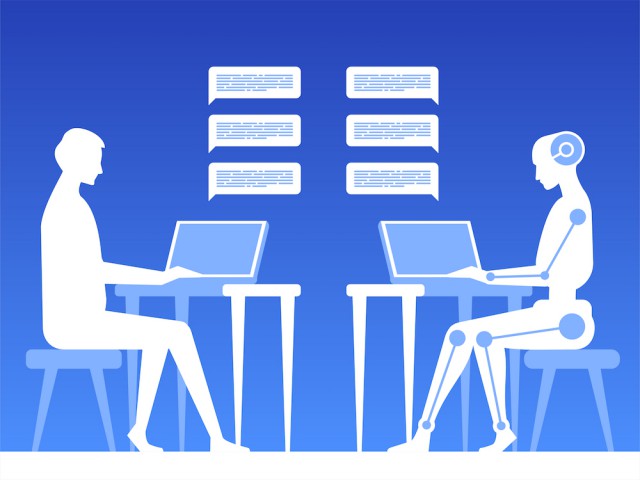The key technologies fueling chatbot evolution

Most of us are familiar with chatbots on customer service portals, government departments, and through services like Google Bard and OpenAI. They are convenient, easy to use, and always available, leading to their growing use for a diverse range of applications across the web.
Unfortunately, most current chatbots are limited due to their reliance on static training data. Data outputted by these systems can be obsolete, limiting our ability to gain real-time information for our queries. They also struggle with contextual understanding, inaccuracies, handling complex queries, and limited adaptability to our evolving needs.
SEE ALSO: With the new GPT-4o model OpenAI takes its ChatGPT to the next level
To overcome these issues, advanced techniques like Retrieval-Augmented Generation (RAG) have emerged. By leveraging various external information sources, including real-time data collected from the open web, RAG systems can augment their knowledge base in real time, providing more accurate and contextually relevant responses to users' queries to enhance their overall performance and adaptability.
Chatbots: challenges and limitations
Current chatbots employ various technologies to handle training and inference tasks, including natural language processing (NLP) techniques, machine learning algorithms, neural networks, and frameworks like TensorFlow or PyTorch. They rely on rule-based systems, sentiment analysis, and dialog management modules to interpret user input, generate appropriate responses, and maintain the flow of conversation.
However, as mentioned previously, these chatbots face several challenges. Limited contextual understanding often results in generic or irrelevant responses because static training datasets may fail to capture the diversity of real-world conversations.
Furthermore, without real-time data integration, chatbots may experience “hallucinations” and inaccuracies. They also struggle with handling complex queries that require deeper contextual understanding and lack adaptability to open knowledge, evolving trends, and user preferences.
Improving the chatbot experience with RAG
RAG merges generative AI with information retrieval from external sources on the open web. This approach significantly improves contextual understanding, accuracy, and relevance in AI models. Moreover, information in the RAG system’s knowledge base can be dynamically updated, making them highly adaptable and scalable.
RAG utilizes various technologies, which can be categorized into distinct groups: frameworks and tools, semantic analysis, vector databases, similarity search, and privacy/security applications. Each of these components plays a crucial role in enabling RAG systems to effectively retrieve and generate contextually relevant information while maintaining privacy and security measures.
By leveraging a combination of these technologies, RAG systems can enhance their capabilities in understanding and responding to user queries with accuracy and efficiency, thereby facilitating more engaging and informative interactions.
The frameworks and tools
Frameworks and associated tools provide a structured environment for developing and deploying retrieval-augmented generation models efficiently. They offer pre-built modules and tools for data retrieval, model training, and inference, streamlining the development process and reducing implementation complexity.
Additionally, frameworks facilitate collaboration and standardization within the research community, enabling researchers to share models, reproduce results, and advance the field of RAG more rapidly.
Some frameworks currently in use include:
- LangChain: A framework specifically designed for Retrieval-Augmented Generation (RAG) applications that integrates generative AI with data retrieval techniques.
- LlamaIndex: A specialized tool created for RAG applications that facilitates efficient indexing and retrieval of information from a vast number of knowledge sources.
- Weaviate: One of the more popular vector bases; it has a modular RAG application called Verba, which can integrate the database with generative AI models.
- Chroma: A tool that offers features such as client initialization, data storage, querying, and manipulation.
Vector databases for quick data retrieval
Vector databases efficiently store high-dimensional vector representations of public web data, enabling fast and scalable retrieval of relevant information. By organizing text data as vectors in a continuous vector space, vector databases facilitate semantic search and similarity comparisons, enhancing the accuracy and relevance of generated responses in RAG systems. Additionally, vector databases support dynamic updates and adaptability, allowing RAG models to continuously integrate new information from the web and improve their knowledge base over time.
Some popular vector databases are Pinecone, Weaviate, Milvus, Neo4j, and Qdrant. They can process high-dimensional data for RAG systems that require complex vector operations.
Semantic analysis, similarity search, and security
Semantic analysis and similarity enable RAG systems to understand the context of user queries and retrieve relevant information from vast datasets. By analyzing the meaning and relationships between words and phrases, semantic analysis tools ensure that RAG applications generate contextually relevant responses. Similarly, similarity search algorithms are used to identify documents or data parts that would help LLM to answer the query more accurately by giving it wider context.
Semantic analysis and similarity search tools used in RAG systems include:
- Semantic Kernel: Provides advanced semantic analysis capabilities, aiding in understanding and processing complex language structures.
- FAISS (Facebook AI Similarity Search): A library developed by Facebook AI Research for efficient similarity search and clustering of high-dimensional vectors.
Last but not least, privacy and security tools are essential for RAG in order to protect sensitive user data and ensure trust in AI systems. By incorporating privacy-enhancing technologies like encryption and access controls, RAG systems can safeguard user information during data retrieval and processing.
Additionally, robust security measures prevent unauthorized access or manipulation of RAG models and the data they handle, mitigating the risk of data breaches or misuse.
- Skyflow GPT Privacy Vault: Provides tools and mechanisms to ensure privacy and security in RAG applications.
- Javelin LLM Gateway: An enterprise-grade LLM that enables enterprises to apply policy controls, adhere to governance measures, and enforce comprehensive security guardrails. These include data leak prevention to ensure safe and compliant model use.
Embracing emerging technology in future chatbots
Emerging technologies used by RAG systems mark a notable leap forward in the use of responsible AI, aiming to enhance chatbot functionality significantly. By seamlessly integrating web data collection and generation capabilities, RAG facilitates superior contextual understanding, real-time web data access, and adaptability in responses. This integration holds promise in revolutionizing interactions with AI-powered systems, promising more intelligent, context-aware, and dependable experiences as RAG continues to evolve and refine its capabilities.
Photo Credit: Ico Maker/Shutterstock

Juras Jursenas is Chief Operating Officer at Oxylabs.
